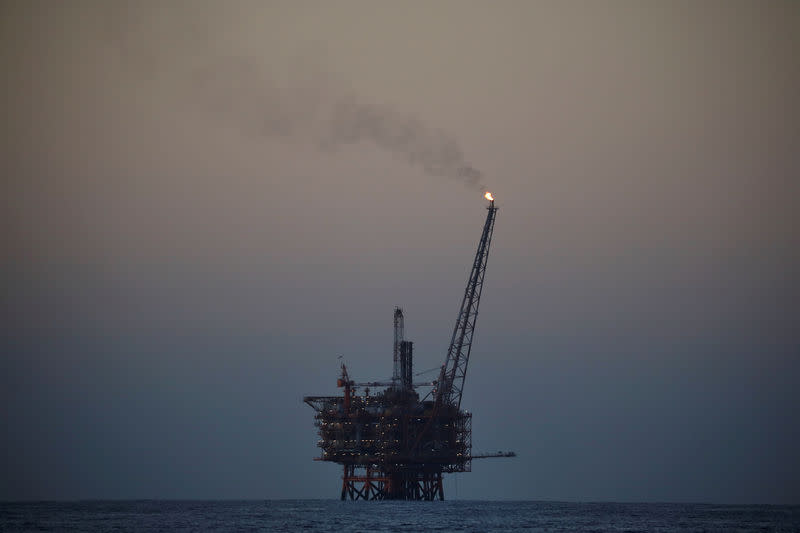Oil prices drop over 1 percent on Iran sanctions waivers
By Stephanie Kelly
NEW YORK (Reuters) - Oil prices fell on Tuesday, with U.S. crude futures sliding to an eight-month low, a day after Washington granted sanction waivers to top buyers of Iranian oil and as Iran said it had so far been able to sell as much oil as it needs to sell.
Brent crude (LCOc1) futures fell $1.04 to settle at $72.13 a barrel, a 1.42 percent loss. The global benchmark hit a session low of $71.18 a barrel, lowest since Aug. 16.
U.S. West Texas Intermediate (WTI) crude (CLc1) futures fell 89 cents, or 1.41 percent, to settle at $62.21 a barrel. The session low was $61.31 a barrel, the weakest since March 16.
Iran said it had so far been able to sell as much oil as it needs and urged European countries opposed to U.S. sanctions to do more to shield Iran.
The United States on Monday restored sanctions targeting Iran's oil, banking and transport sectors and threatened more action. U.S. Treasury Secretary Steven Mnuchin said Washington aimed to bring Iranian oil exports to zero, but 180-day exemptions were granted to eight importers: China, India, South Korea, Japan, Italy, Greece, Taiwan and Turkey.
This group takes as much as three-quarters of Iran's seaborne oil exports, trade data shows, meaning the Islamic Republic will still be allowed to export some oil for now.
Industry estimates suggest Iran's oil exports have fallen 40 to 60 percent since Trump said in May he would reimpose sanctions. However, exemptions could allow exports to rise again after November.
Turkish President Tayyip Erdogan said the country, a top importer of Iranian oil, would not abide by the sanctions, which he said were aimed at "unbalancing the world."
"While the Iranian sanctions should still be viewed as a latent bullish consideration capable of limiting much additional price slippage, it would appear that the Iranian factor alone will not be capable of spurring higher prices without major assistance from a renewed strengthening in the equities, sustainable weakening in the U.S. dollar or a significant cut back in OPEC production," Jim Ritterbusch, president of Ritterbusch & Associates, said in a note.
Concerns about oil demand weighed on prices. The trade dispute between the United States and China threatens growth in the world's two biggest economies and currency weakness is pressuring economies in Asia.
On the supply side, U.S. crude oil production is expected to average 12.06 million barrels per day (bpd) in 2019, passing the 12 million bpd milestone sooner than expected on surging domestic shale output, the U.S. Energy Information Administration said on Tuesday.
Market participants awaited industry data on U.S. crude stockpiles due to be released at 4:30 p.m. EST. Official government data will be released Wednesday.
Output is rising from the world's top three producers. Russia, the United States and Saudi Arabia combined produced more than 33 million bpd for the first time in October, enough to meet more than a third of the world's almost 100 million bpd of crude oil consumption.
Top crude exporter Saudi Arabia has cut the December price for its Arab Light grade for Asian customers.
Hedge fund managers were net sellers of petroleum-linked futures and options last week.
Morgan Stanley on Tuesday lowered its price forecast for Brent, saying the global benchmark will stay at $77.5 per barrel to mid-2019.
(Reporting by Stephanie Kelly in New York, Shadia Nasralla in London and Henning Gloystein in Singapore; Editing by David Gregorio, Susan Thomas and Chizu Nomiyama)


